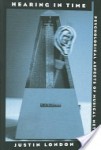Time signatures in ballet class: don’t get precious about them
There’s no polite way to say this—pianists, don’t get pissy about time signatures in ballet class. In other words, if a teacher says they want a 4 and then mark something that sounds like 6/8, don’t get on your high horse, play something in 4 and say ‘But that’s what you asked for’. You might feel pleased with yourself for a second or two, but you run the risk of being known as that rather irritating pianist who pulled the teacher up on a technicality, while she had a dozen other things to think about.
Instead, look at the exercise, listen to all the clues you can, make a judgement about what you think the teacher is looking for based on all the information available (not just what they said when they started), and if it’s ambiguous, ask. In fact, rather than asking, it’s probably better to take a punt and play something on the first side and see what happens. If the rhythm seemed ambiguous in the marking, it might be that it doesn’t matter that much, or that the teacher is not sure what would work best – in which case, there’s no point in asking, just let everyone have a go with some music and see whether it works.

If it goes wrong, there’s your answer. This empirical approach to music for class is a much better way to find out what works than trying to pin down and theorize everything in advance, or trying to find fail-safe names for everything. The obstacle to working this way is fear of getting it wrong, of losing face, and once that fear sets in on both sides (teacher and pianist), you’re on a terrible journey. But if you don’t look to the teacher to know everything in advance, and instead create an atmosphere where it’s OK for both of you to get it wrong now and again, you’ll live long and be happy.
Life without time signatures
The other reason to forget about time signatures is that if you categorize music by time signature, you’ll miss a lot of cases where the metre of the music as it sounds is ‘hidden’ behind the time signature. Here’s a few examples:
- Music for grand allegro which is in 6/8 rather than 3/4 – think of all the wilis music in Act II Giselle, or the male variation of Tchaikovsky pas de deux. If you think ‘waltz’ or ‘3/4’, you’ll mentally rule out some of the best repertoire.
- Slow music in 4 that has accompaniment in triplets can be reclassified as 3/4, 6/8, 12/8.
- By the same token, a lot of ballady type music in 12/8 is of course effectively in 4
- Hornpipes, if you swing them, turn from 2/4 into a kind 6/8, but you feel them as four. There’s not really a term for this – it’s just ‘bouncy’ music, and time signature is less relevant than what you do with the notes.
- A baroque gigue-y type of music in 12/8 could be construed as four bars of 3/4. Teachers use the term ‘waltz’ or ‘3/4’ generically to mean something in triple metre, but don’t let the terms distract you from other forms and repertoire
- The opposite applies to the ‘waltz song’ which can be, metrically, much more like a ballad in 4 with a triplet accompaniment. Disaster for allegro – not all that has ‘waltz’ written on it actually waltzes.
- Hypermetrical organization is important – Morning has broken might be written in 3/4 (it isn’t always) but hypermetrically it’s 9/8 or 9/4, and you can hear it as a slow six. The one thing it isn’t, particularly, is ‘3’.
A lot of those bullet points came out of everyday experiences with music, but Justin London’s Hearing in Time , a wonderful book on the perception of time and metre in music, gave me a whole set of theoretical tools with which to look at music in different ways that became very useful when looking for new repertoire. His online lecture How to talk about musical metre introduces some of the concepts from the book.


thanks for the information